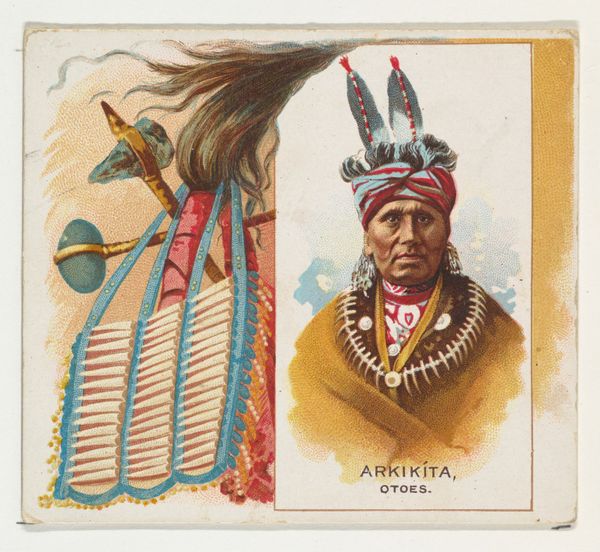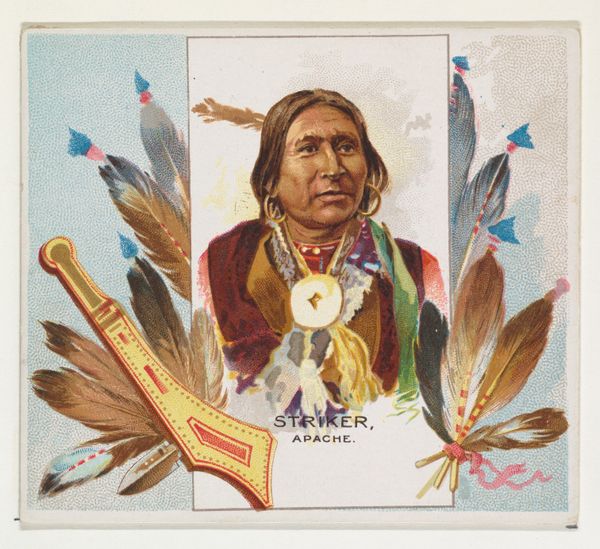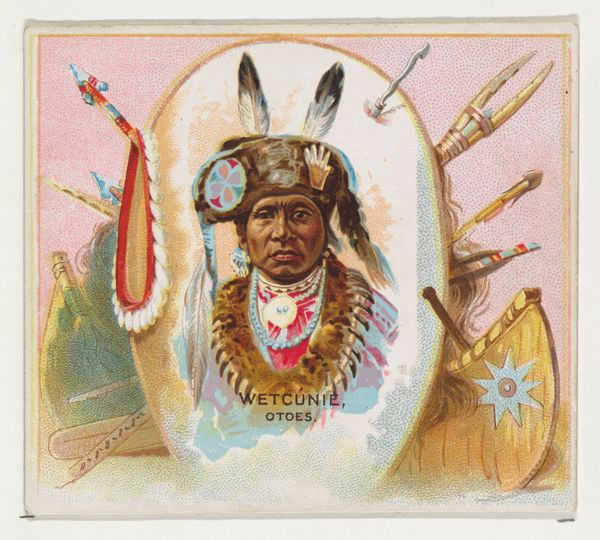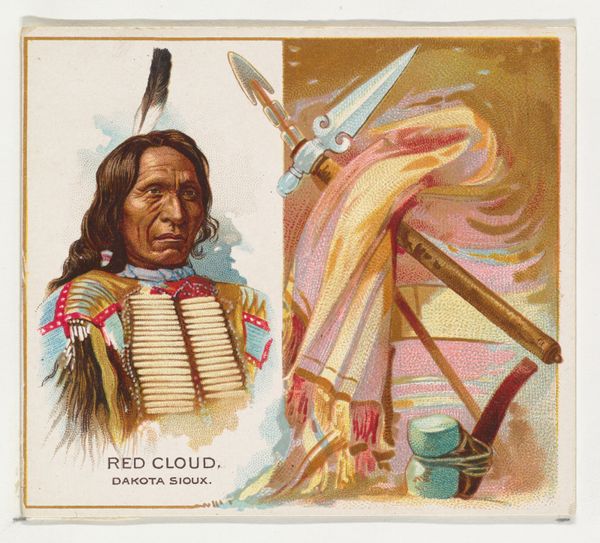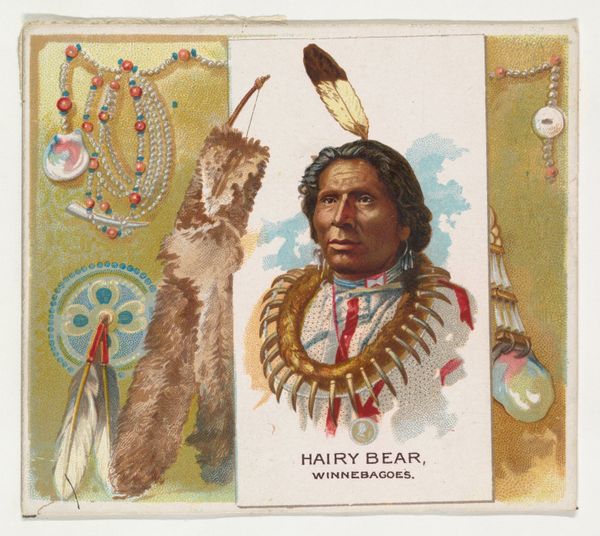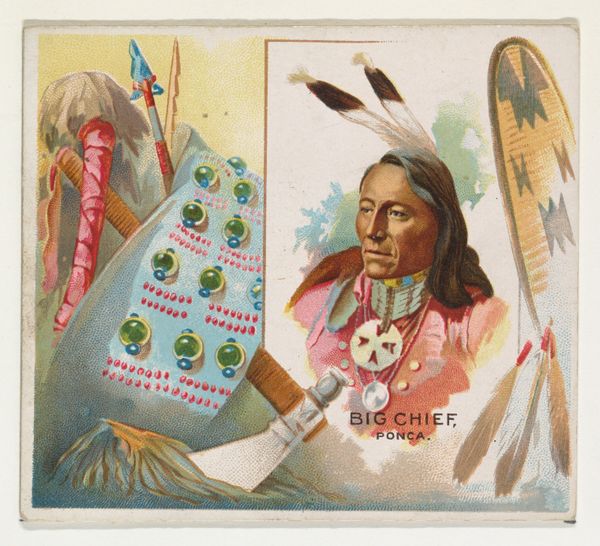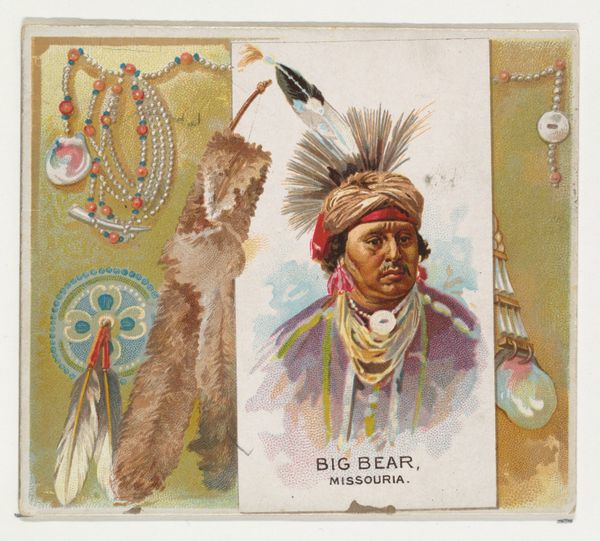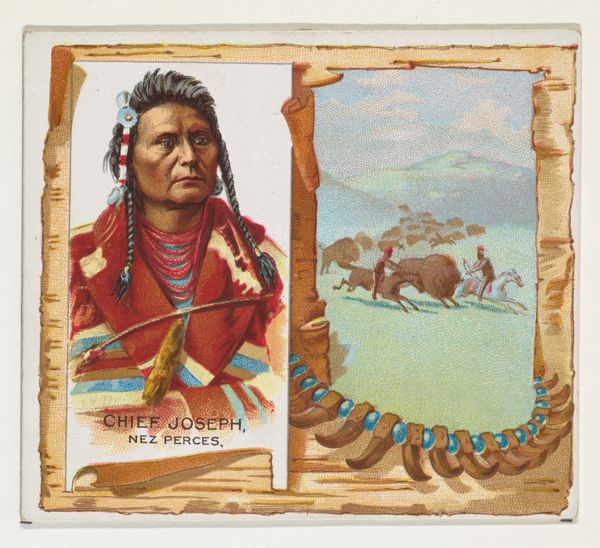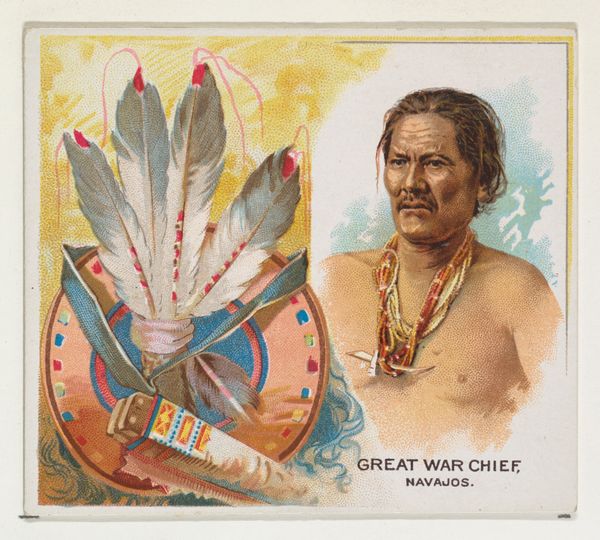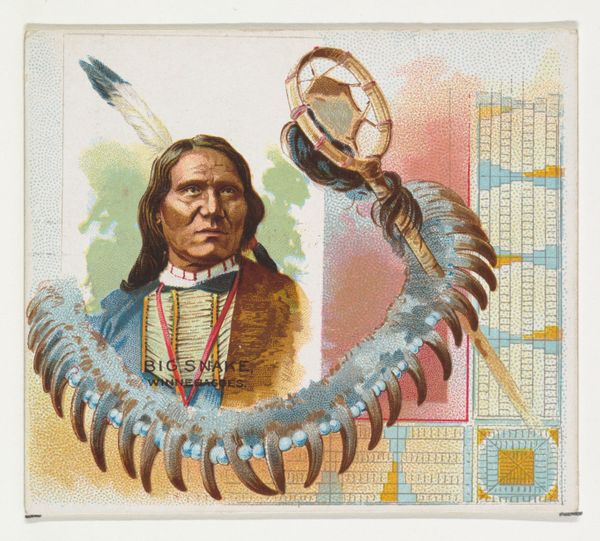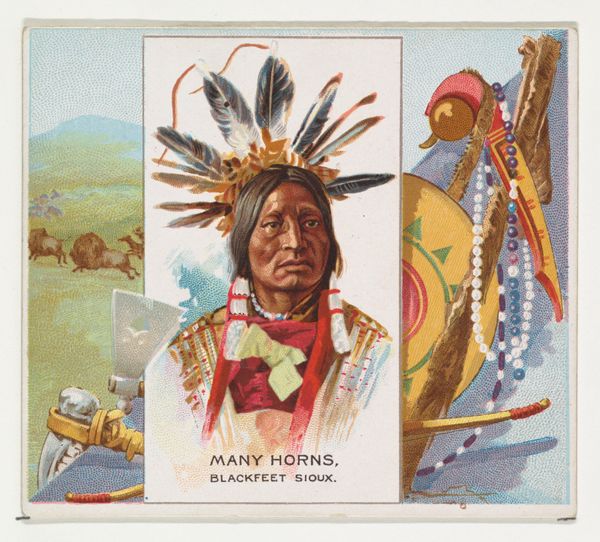
Always Riding, Yampah Ute, from the American Indian Chiefs series (N36) for Allen & Ginter Cigarettes 1888
0:00
0:00
drawing, coloured-pencil, print
#
portrait
#
drawing
#
coloured-pencil
# print
#
caricature
#
coloured pencil
#
men
#
realism
Dimensions: Sheet: 2 7/8 x 3 1/4 in. (7.3 x 8.3 cm)
Copyright: Public Domain
Editor: This is "Always Riding, Yampah Ute," a colored pencil print from 1888, part of Allen & Ginter's American Indian Chiefs series. There's something unsettling about the almost cartoonish depiction alongside the figure's stoic expression. How should we interpret this work, especially considering its historical context? Curator: It’s crucial to understand that these cards weren't created to honor Indigenous peoples, but rather as commercial objects circulated within a culture actively engaged in their oppression and displacement. The romanticized depiction and the very act of commodifying Indigenous identity reinforces harmful power dynamics. Do you see how it essentializes a complex culture into a marketable image? Editor: I do. It's like the card reduces a whole group of people to a caricature, freezing them in time and misrepresenting their culture for profit. It's uncomfortable to look at. Curator: Exactly. What looks like a portrait is actually a tool of cultural erasure. We must ask ourselves how these images contributed to the dehumanization that fueled violence and injustice. The romanticism becomes a dangerous form of othering, allowing viewers to distance themselves from the reality of colonial impact. Consider the implications of a generation growing up seeing such images. Editor: So, understanding the artwork requires confronting uncomfortable truths about representation, capitalism, and colonialism. Curator: Precisely. By acknowledging the historical and social context, we can analyze the role these images played in shaping societal perceptions and perpetuating systemic inequalities. It makes you rethink seemingly innocent historical objects, doesn't it? Editor: Absolutely. I'll never look at these types of images the same way again. Thanks!
Comments
No comments
Be the first to comment and join the conversation on the ultimate creative platform.
